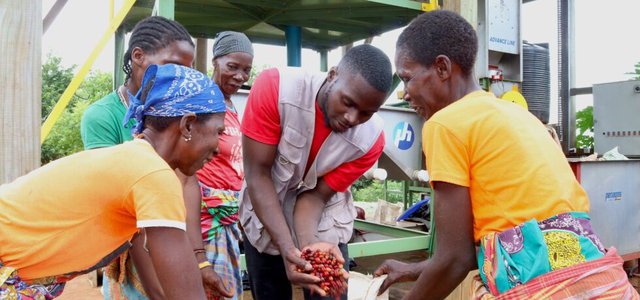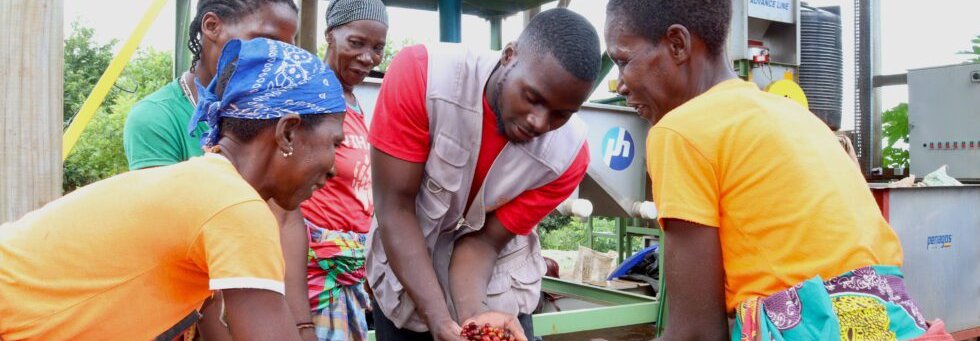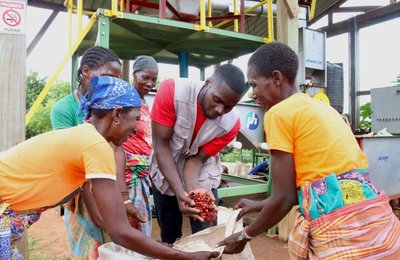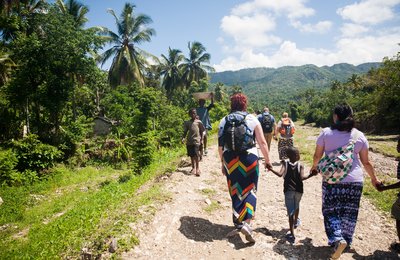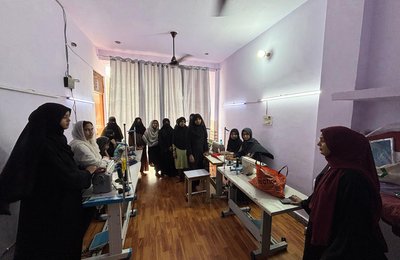Mozambique: Coffee reforestation sustains community peace and livelihoods
Portuguese colonial cruelty not only destroyed the fabric of community peace but also hindered Mozambique’s ability to be a coffee producer. Despite having rich soils and abundant rainfall, Mozambique lags its regional peers, Zimbabwe and Malawi, in coffee output. This was due to Portuguese colonial rulers banning small-scale Black families from cultivating the lucrative Arabica coffee as a way of protecting the produce from Brazil, its much more ‘precious’ colony.
But today, a community initiative centred around Black ownership and commercialisation of bio-forestry in central Mozambique has helped reduce rural poverty, soothe tensions and, thus, help keep the peace.
“The coffee reforestation belongs to the community. We plant hope and we harvest peace,” says Pedro Muagura – a local forester leading the community reforestation of Gorongosa Mountain in the Gorongosa National Park, in Sofala province, central Mozambique.
Muagura, who is also the Park’s Director of Conservation, has had extensive education at the local Chimoio Institute of Agriculture and the International Faculty of Forest and Timber Technology in Finland.
For the past decade, he has been working in Gorongosa National Park, leading his community to plant and protect what is today 600,000 hectares of Arabica coffee.
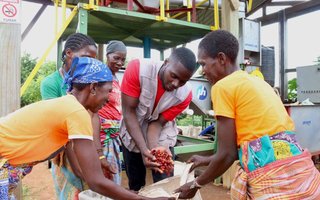
Strife
Though Mozambique’s civil war ended formally in 1992, local conflicts involving gunbattles make areas of the country violent. For example, factions of the RENAMO anti-government guerrillas would clash in major battles with the Mozambique army in the Gorongosa Park in the 1980s, 90s, and briefly in 2013. Today, in the far north in Cabo, Delgado Province near the border with Tanzania, the discovery of natural gas deposits reportedly worth US$60bn has sparked a Jihadist anti-state insurgency that has caused 2,600 deaths and displaced 1.3 million locals.
“In all these localised but very damaging civil war theatres, the common grievance is that the self-enriching Mozambique government, whose seat of power is in Maputo, far south, neglects the central and northern provinces of the country,” says Tapiwa O’Brien Nhachi, a former researcher with the regional Centre for Natural Resources Governance.
Dire poverty and a lack of options led locals near the vast, 3,770 square-km Gorongosa park to mow down trees that had hugged the slopes of Mt Gorongosa.
“We had no option because we didn’t have jobs. We chopped down the trees to sell as firewood or as material for carpenters,” says Likani Madoza, a tribal community leader in one of the villages surrounding Gorongosa Mountain.
Madoza, who is 50 and remembers the discord and hatred sown within and between communities during the civil war in the late 90s, says that “as the deforestation accelerated, locals would sometimes clash over access to the choicest trees for resale.”
On the other hand, the poaching of elephants and other wildlife in the Gorongosa National Park made the conflict criminal, as syndicates pitted poor locals against each other.
“The scramble for livelihoods was brewing harmful community hatreds,” Madoza says.
Forest and hope
It all began to change in 2014, when Muagura led community efforts to plant the first coffee trees as a way of building a sustainable livelihood for locals.
“In 2017, we had jumped to [having planted] 270,000 coffee trees,” he says, revealing that 20,000 quick-growing coffee trees were lining the slopes of Mt Gorongosa, fast reversing the toll of deforestation.
“The coffee forestry programme was such an important intervention, first ecologically,” he adds. “The coffee trees would enmesh themselves amongst indigenous forest trees like mahogany and mutsodzo species.”
In turn, naturally tall indigenous trees now tower over the growing coffee bushes, providing shade, blocking soil erosion and nutrition, he added. Apart from soaking up extreme heat in the community, river sources that nourish communities downstream now flow healthily for the benefit of domestic animals, wildlife, and local gardens and small farms worked by families downstream.
For locals like Madoza, the greatest benefit is community peace and improved livelihoods. “Locals no longer cut down the precious indigenous forest trees that protect the crucial Arabica coffee trees and nourish the farming ecosystems. Secondly, when there is hope of a sustainable livelihood, locals are more likely to shun violence and focus on protecting the peace and livelihoods,” he says.
In what feels like no time, 16 tonnes of green coffee have been harvested, and the cooperation has grown to a network of 800 small-scale community farmers, half of which are women.
“On the labour front, 150 locals are direct workers in the coffee reforestation programme as temporary or long-term workers,” Muagura says.
So important for the community has the reforestation project been in supporting peace that in 2019, when a few insurgents engaged in small gun battles with the Mozambique army, local women would sneak out and secretly water the coffee trees, according to Muagura.
Later in 2019, the Mozambique government and the rebels chose Gorongosa forest as a venue for a lasting peace accord, and the Park became colloquially known as ‘The Park of Peace’.
With the coffee sustaining local livelihoods and bio-forestry resources, “the peace bond is as strong as ever too,” concludes Muagura.
